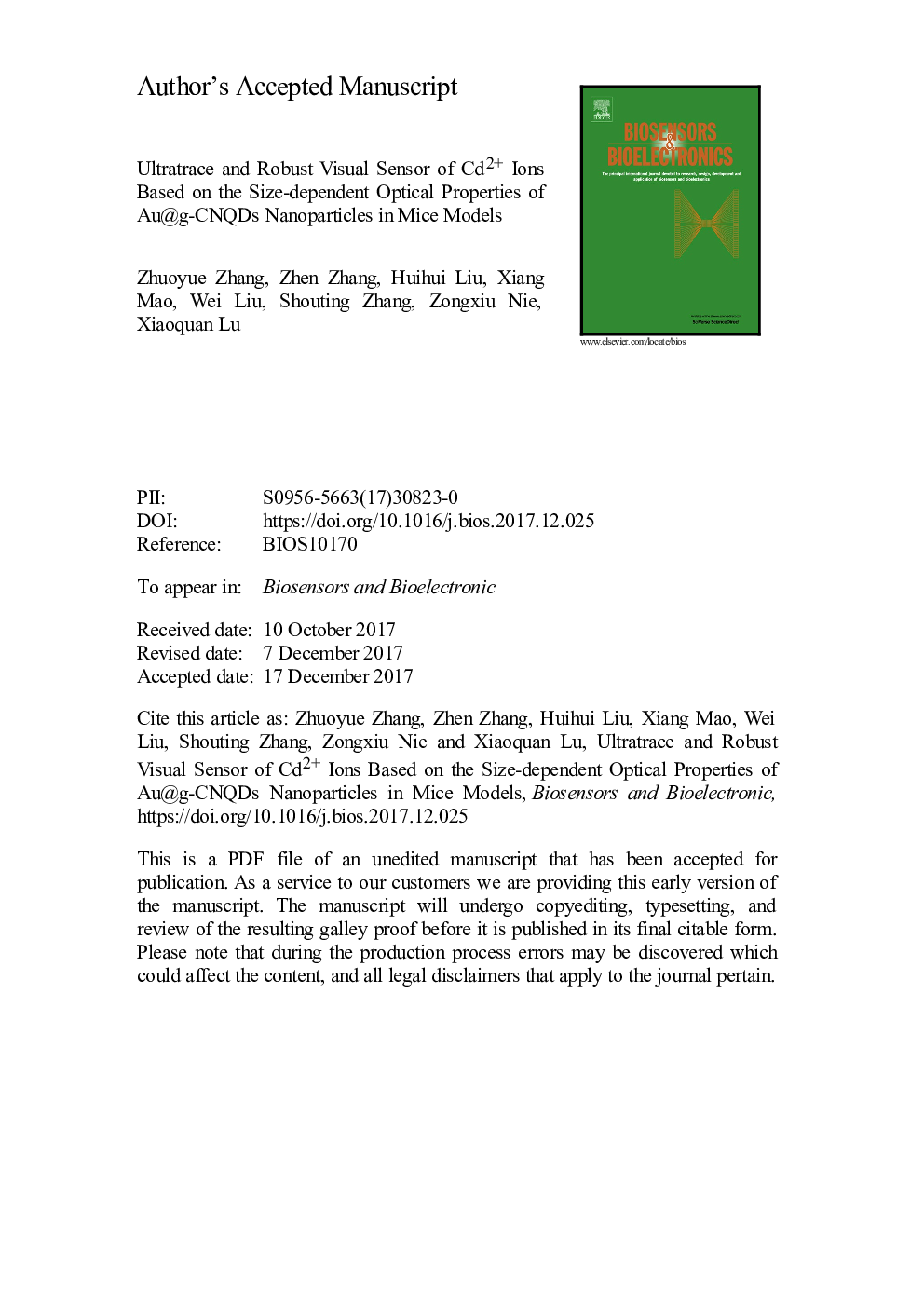| Article ID | Journal | Published Year | Pages | File Type |
|---|---|---|---|---|
| 7229822 | Biosensors and Bioelectronics | 2018 | 16 Pages |
Abstract
Visual inspection is expected as an ideal technique, which can directly and conveniently detect heavy metal ions by observing the color change. Insensitivity of detecting weakly colored heavy transition metal ions and low adsorptivity of metal ions on nanoparticle surface are two main factors hindering the application of visual detection in heavy metal ions detection. Herein, we demonstrated an operational colorimetric sensor based on the color dependence of nanoparticles aggregation to selective and facile detect weakly colored transition heavy metal Cd2+ ions that have been considered as the origin of the “Itai-itai” disease. Uniform colloidal 15 nm graphite-like nitride doped carbon quantum dots-capped gold nanoparticle (Au@g-CNQDs) was successfully prepared, wherein the existence of numerous heptazine, carboxyl and hydroxyl groups on the nanoparticle's surface strengthened adsorption of the Cd2+ ions on the surface of Au@g-CNQDs through the “cooperative effect”. As a consequence, without expensive and intricate exogenous indicators or other special additives, the Cd2+ ions could sensitively and quickly captured to detect at ultra-low concentration within 30 s by the naked-eye. Under the optimal conditions, the Cd2+ ions sensor possesses good analytical performances with a wide linear range of 0.01-3.0 μM and a detection limit of 10 nM (S/N = 3). Moreover, the biodistribution and aggregation of Cd2+ ions were detected effectively in mice organ tissues suggesting its great potential use for real-word applications.
Keywords
Related Topics
Physical Sciences and Engineering
Chemistry
Analytical Chemistry
Authors
Zhuoyue Zhang, Zhen Zhang, Huihui Liu, Xiang Mao, Wei Liu, Shouting Zhang, Zongxiu Nie, Xiaoquan Lu,
